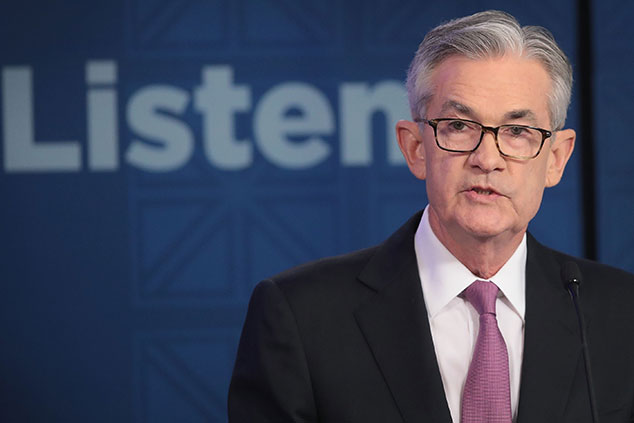
This article is taken from our FREE daily investment email Money Morning.
Every day, MoneyWeek’s executive editor John Stepek and guest contributors explain how current economic and political developments are affecting the markets and your wealth, and give you pointers on how you can profit.
It’s a big week for central banks around the world.
The Bank of England and the Bank of Japan both talk interest rates and monetary policy on Thursday. Chances are, neither of them will do anything, and chances are, markets won’t react much either way.
There’s a few other central banks reporting too: Norway, Brazil, Taiwan and Indonesia. But if I hadn’t told you that, you wouldn’t have been any the wiser, so let’s not fret about them.
But the biggie – America’s central bank, the Federal Reserve – reports on Wednesday. And whatever it does, it’s going to have an impact.
Markets are banking on a serious change of course from the Fed
The US central bank is of course the most important central bank in the world. It’s in charge of the most important currency in the world, the US dollar. It’s in charge of the cost of money for the most important economy in the world – that of the US.
It’s little wonder that a small change in the wording of a statement – a tiny tremor in the top lip of the Federal Reserve chair – can move markets.
Companies may come and go. Billions of people can make decisions about spending, investing and saving. The words emanating from a small committee in a room in Washington DC matter more for asset markets than any of that free exchange stuff.
Who says that central planning doesn’t work?!
I jest, of course. Anyway, back to the topic. So the Fed sits down later today to start its two-day meeting on what to do with interest rates.
Now, when it comes to the data, the US economy is mixed. Retail sales data for May was pretty good. Industrial production was pretty limp. Consumer confidence was mixed (more on that in a moment). Employment data remains solid although the most recent non-farm payrolls figure was disappointing. And inflation remains weak.
None of this is cast-iron proof that recession is on the way. Far from it. And if the world wasn’t such a nervy place, even now, ten years on from the financial crisis, then I’m not sure that talk of a desperate need for interest rate cuts (“just in case”) would be being entertained.
Yet, they’re not just being entertained – they’re being banked on.
Futures markets show that investors already think that there’s an 85% of an interest rate cut in July. And as Mohamed El-Erian notes on Bloomberg, that’s just the start. They reckon that there’ll be at least another two or three cuts before the end of the year, on top of that.
Meanwhile, the latest Michigan index of consumer sentiment indicates that US consumers increasingly think that now is a good time to make “big-ticket” purchases, notes David Rosenberg of Gluskin Sheff.
Why do they feel upbeat on this front if they are also feeling a bit wobbly on the economy (which they are)? Because the cost of money is falling. The bond market has slid hard in recent months and that’s pushed down the price of home loans, for example.
Long story short, everyone and their granny is convinced that an interest rate cut is just a matter of time, and not an awful lot of time at that. If the market doesn’t at least get a heavy hint that a rate cut is just around the corner, then it’s going to throw the mother of all hissy fits.
The Fed won’t let the market down – eventually
So what does this mean for your money? The good news for the Fed is that the market doesn’t expect a rate cut this month.
A different Fed boss might take advantage of that fact to surprise markets by being even more dovish than expected, and cutting rates by a quarter point. That would allow the Fed to get ahead of the market.
If Jerome Powell does go for that option, it’ll show that he’s finally learned his lessons from the gospel of Greenspan properly. But I suspect that he won’t do that.
For a start, it might rattle investors – “what does the Fed know that we don’t?”. Secondly, I’m not sure that Powell really quite buys the idea that a rate cut is as vital as the market seems to think it is.
As US financial paper Barron’s puts it, it’s true that “global growth does face a clear and present danger from tariffs and trade wars, which already are exerting a drag on corporate outlooks.” But can lower interest rates (bearing in mind that they’re already extremely low) really do much to offset that?
Powell would probably prefer to see a trade deal to tackle that particular problem, rather than being left to try to cushion the blow with looser monetary policy.
And yet, all of that said, Powell isn’t daft. He’s already pulled a U-turn earlier this year and he knows that if he doesn’t make it clear to markets that he’s on board with their opinions, then he’ll just end up having to do more further down the line.
So odds are tomorrow night the Fed will come out with a near-promise to cut rates. And if it doesn’t seem dovish enough, markets will let their displeasure be known, and soon enough the Fed will change its tune.
That’s likely to be good for gold in the slightly longer term. Indeed, trader Paul Tudor Jones was on Bloomberg the other day saying that he reckons gold could be the best trade of the next 12 or 24 months, assuming that the Fed does cut and keeps cutting.
Make sure you have a bit in your portfolio.